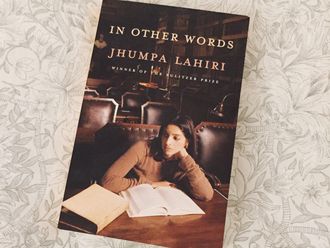
Shortly after the festival of Holi, the temperature in India started rising steadily, and soon woollen shirts became uncomfortable to wear. I realised this was a reminder from the weather deities to pack the woollies as well as the razais (quilts) and blankets. Since this is an annual exercise, I securely consign them to two jumbo-sized tin boxes that I inherited from my grandfather.
Due to my emotional attachment, I refuse to part with them in exchange for newer facilities. Even during my extensive job-related transfers within India, I carried them along even at the risk of inviting ridicule. I tell people with pride about the sturdiness of these boxes which have served three generations and hold out a promise of being with us for some more time. After all, the adage goes: ‘Old is gold’.
So one sunny morning my wife and I spread out the family’s warm clothes in the open, sending some for dry cleaning and carefully dumping the rest in the boxes to be taken out the next season. As in previous years, freshly bought insect-repellent tablets were put in between layers to protect the clothes from moths.
We have switched from those traditional ubiquitous and strong-smelling naphthalene balls which, though said to be more effective, are now preferred for use in the toilets. They say the perfumed versions are equally good.
This reminds me of my early days when naphthalene balls were not in vogue. We used ‘Neem’ (Azadirachta indica) tree leaves which have always been available in abundance all over the country and are nature’s best antiseptic gift. And yes, Neem, with extraordinary medicinal and curative properties, comes for free.
Unlike the modern-day perfumed tablets, the leaves were lavishly spread in between the layers of woollies. Times have changed. Today, due to deforestation and practical difficulties in procuring, Neem leaves have become scarce. Chemically-prepared moth repellents have almost elbowed out the good old antiseptic green leaves.
Best season
Among all the seasons, I enjoy winters the most. Hence, it is always a bit painful and saddening to bid adieu to the clothes that have given me and my family members a respectful and, yes, smart look albeit for only three to four months. You feel that the keenly awaited season has retreated too early.
Instead of depending on others, I like to stack my well-tailored suits and jackets on my own. Every garment is precious for me. My grandmother used to tell me, “If you give respect [accord care] to your garments, they will earn you respect in return.’’
I have been particularly fond of a brown check dressing gown made of woollen khadi that I purchased after a hectic search. It is one of my prized possessions because its design has earned accolades from many. In India, the dressing gown, though an informal dress, is worn at any time of the day and interestingly both inside and even outside the house.
At places, many times, people drop in at your place unannounced, not giving you a chance to come out in a formal dress. This is when the gown comes to the rescue. And nobody minds this informal-cum-formal mode of dressing up because it is generally acceptable.
Every year, in the northern parts of India, April marks the time when we send the woollies into hibernation mode. We then eagerly wait for October when we would get to resurrect our favourite woollies.
To me, sending the woollen clothes to the big boxes is like sending your child to a boarding school for about a year and then waiting for his return.
Lalit Raizada is a journalist based in India.











